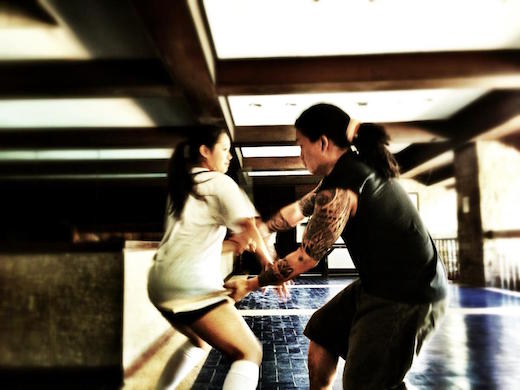FLUID TACTICS
Fluid Tactics is a martial art that focuses its pupils on close ranged and reaction based training. It was developed in 2010 and its premise is for self-preservation and fluidity of motion. It involves various disciplines and philosophies that create a harmony with the pupil. It makes sure that the pupil himself/herself is the weapon but we incorporate tools like bare hand fluid motions, kicks, arnis sticks, knives, short impact weapons, and other tools to help improve one’s movement.
Fluid Tactics also incorporates kickboxing, boxing, and Jeet Kune Do methods, and physical conditioning to help facilitate growth and progress. It also involves human psychology and alternative perceptions to create scenarios for the pupil. It also aims to emphasize the importance of knowing and understanding the yin and the yang of the martial arts. Meaning, students must understand the violence of the art of self-preservation and at the same time understand that they must be able to control their emotions and actions when it comes to physical or psychological stress.
It gives emphasis on the flow of movement and the meditation and clarity it gives its pupils; Knowing that they could very well protect themselves but also be able to control the emotions that could turn into aggression and anger. No one scenario of threat is the same. Each scenario can give either a fight or a flight response to the person. This is where the clarity and focus of Fluidity comes to play. The student must be able to respond to any and all forms of threat pertaining to his or her personal space or for the protection of their loved ones.
Therefore, Fluid Tactics not only trains the physical aspect of the marital arts. It is an embodiment of what true martial artists should be. Fluid. There will always be threats that will come in. And it always comes unexpectedly. Fluid Tactics helps students understand that the initial response is sometimes the difference between life and death. It also shows students how to respect others by knowing themselves through their movement.

